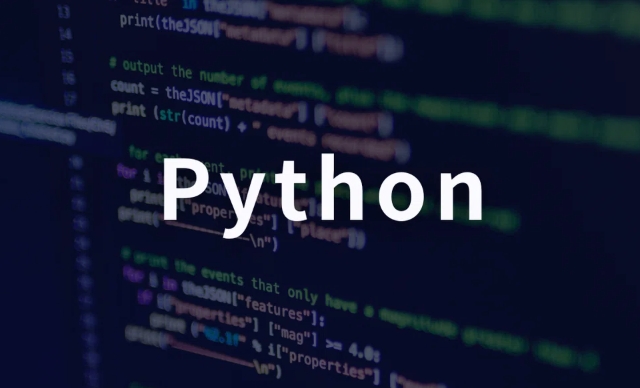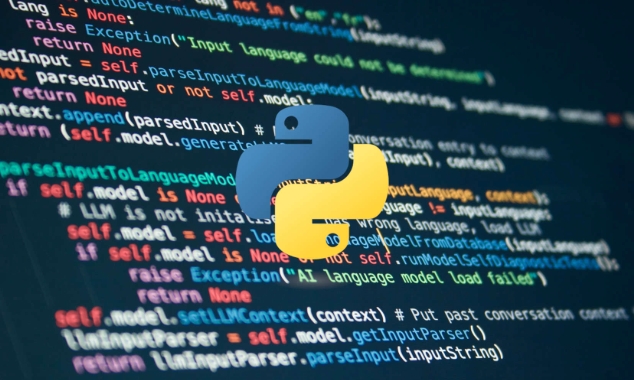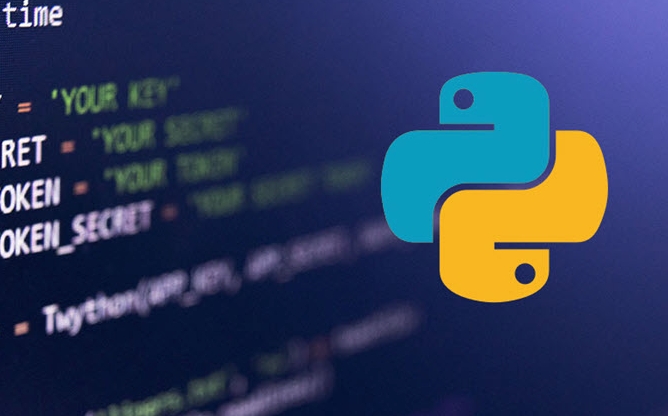 Backend Development
Backend Development
 Python Tutorial
Python Tutorial
 What are some best practices for writing clean and readable Python code?
What are some best practices for writing clean and readable Python code?
What are some best practices for writing clean and readable Python code?
Aug 02, 2025 am 05:50 AMFollow PEP 8 by using 4 spaces for indentation, limiting lines to 79 characters, naming variables with underscores, classes with CamelCase, and separating functions with blank lines, while using tools like black or flake8 for enforcement. 2. Use meaningful names such as total_price instead of tp and verbs for functions like calculate_tax, ensuring consistency across similar concepts. 3. Keep functions small and focused, ideally under 20–30 lines, by breaking large ones into smaller helpers like validate_order and ship_order. 4. Use type hints such as def greet(name: str) -> str to improve clarity and enable static analysis with mypy. 5. Write clear docstrings in Google or Sphinx format for functions, explaining parameters and return values, and avoid redundant comments. 6. Embrace Pythonic idioms like list comprehensions, context managers for file handling, and built-in functions like enumerate and zip. 7. Organize imports in order—standard library, third-party, local—separated by blank lines, and avoid wildcard imports. 8. Handle errors with specific exceptions like except ValueError instead of bare except clauses, and log meaningful messages. 9. Write unit tests using pytest or unittest with descriptive names such as test_calculate_tax_with_zero_income and maintain clean test code. 10. Refactor regularly by removing dead code, eliminating duplication, extracting reusable logic, and improving names as understanding evolves. Following these practices ensures Python code remains clean, readable, maintainable, and less error-prone over time.

Writing clean and readable Python code is essential for maintainability, collaboration, and reducing bugs. Here are some widely accepted best practices:

1. Follow PEP 8 – Style Guide for Python Code
PEP 8 is the official style guide for Python and covers formatting, naming conventions, and layout. Key points include:
- Use 4 spaces per indentation level (not tabs).
- Limit lines to 79 characters (72 for docstrings).
- Separate functions and classes with two blank lines.
- Use lowercase with underscores for function and variable names (
my_variable,process_data). - Use
CamelCasefor class names (MyClass,DataProcessor). - Surround top-level functions and classes with blank lines.
- Avoid extraneous whitespace (e.g.,
func( arg )→func(arg)).
You can use tools like flake8, black, or autopep8 to automatically check or format your code.

2. Write Meaningful Names
Choose descriptive and unambiguous names for variables, functions, and classes.
- Avoid single-letter names (except in loops or math contexts).
- Use
total_priceinstead oftp. - Use verbs for function names:
calculate_tax(),fetch_user_data(). - Be consistent: if you use
user_data, don’t switch toclient_infofor the same concept.
This makes your code self-documenting and easier to follow.

3. Keep Functions Small and Focused
Each function should do one thing and do it well (Single Responsibility Principle).
- Aim for functions under 20–30 lines.
- Break large functions into smaller helper functions.
- Use clear function names that describe what they do.
For example:
def process_orders(orders):
validated = [validate_order(o) for o in orders]
shipped = [ship_order(o) for o in validated if o.is_valid]
send_notifications(shipped)Instead of one long function doing validation, shipping, and notifications.
4. Use Type Hints
Type hints improve readability and help catch bugs early.
def greet(name: str) -> str:
return f"Hello, {name}"They’re especially useful in larger projects and when using tools like mypy for static analysis.
5. Write Clear and Concise Comments and Docstrings
Only comment when the code isn’t self-explanatory. Avoid stating the obvious.
Use docstrings for modules, classes, and functions. The most common format is Google style or Sphinx:
def calculate_area(radius: float) -> float:
"""Calculate the area of a circle given its radius.
Args:
radius: The radius of the circle.
Returns:
The area of the circle.
"""
return 3.14159 * radius ** 26. Leverage Pythonic Idioms
Write code in a way that feels natural in Python:
- Use list comprehensions for simple transformations:
squares = [x**2 for x in range(10)]
- Use context managers for file handling:
with open("file.txt") as f: content = f.read() - Use
enumerate()andzip()instead of manual indexing. - Prefer
if not listoverif len(list) == 0.
7. Organize Imports Properly
Follow the PEP 8 import order:
- Standard library imports
- Third-party imports
- Local application imports
Separate each group with a blank line. Avoid wildcard imports (from module import *).
import os import sys import requests import numpy as np from mypackage import mymodule
8. Handle Errors Gracefully
Use specific exceptions and avoid bare except: clauses.
try:
value = int(user_input)
except ValueError:
print("Invalid number")Log meaningful error messages and avoid silencing exceptions unless intentional.
9. Use Version Control and Write Tests
Clean code isn’t just about style—it’s also about reliability.
- Write unit tests using
unittestorpytest. - Keep test code clean too.
- Use descriptive test names:
test_calculate_tax_with_zero_income.
10. Refactor Regularly
Don’t write code once and forget it. Revisit and simplify as you learn more.
- Remove dead code and duplicate logic.
- Extract repeated patterns into functions or classes.
- Rename things as your understanding evolves.
Basically, clean Python code reads like well-written prose: clear, concise, and easy to follow. Following these practices consistently makes a big difference over time.
The above is the detailed content of What are some best practices for writing clean and readable Python code?. For more information, please follow other related articles on the PHP Chinese website!

Hot AI Tools

Undress AI Tool
Undress images for free

Undresser.AI Undress
AI-powered app for creating realistic nude photos

AI Clothes Remover
Online AI tool for removing clothes from photos.

Clothoff.io
AI clothes remover

Video Face Swap
Swap faces in any video effortlessly with our completely free AI face swap tool!

Hot Article

Hot Tools

Notepad++7.3.1
Easy-to-use and free code editor

SublimeText3 Chinese version
Chinese version, very easy to use

Zend Studio 13.0.1
Powerful PHP integrated development environment

Dreamweaver CS6
Visual web development tools

SublimeText3 Mac version
God-level code editing software (SublimeText3)

Hot Topics
 How to use PHP combined with AI to achieve text error correction PHP syntax detection and optimization
Jul 25, 2025 pm 08:57 PM
How to use PHP combined with AI to achieve text error correction PHP syntax detection and optimization
Jul 25, 2025 pm 08:57 PM
To realize text error correction and syntax optimization with AI, you need to follow the following steps: 1. Select a suitable AI model or API, such as Baidu, Tencent API or open source NLP library; 2. Call the API through PHP's curl or Guzzle and process the return results; 3. Display error correction information in the application and allow users to choose whether to adopt it; 4. Use php-l and PHP_CodeSniffer for syntax detection and code optimization; 5. Continuously collect feedback and update the model or rules to improve the effect. When choosing AIAPI, focus on evaluating accuracy, response speed, price and support for PHP. Code optimization should follow PSR specifications, use cache reasonably, avoid circular queries, review code regularly, and use X
 PHP calls AI intelligent voice assistant PHP voice interaction system construction
Jul 25, 2025 pm 08:45 PM
PHP calls AI intelligent voice assistant PHP voice interaction system construction
Jul 25, 2025 pm 08:45 PM
User voice input is captured and sent to the PHP backend through the MediaRecorder API of the front-end JavaScript; 2. PHP saves the audio as a temporary file and calls STTAPI (such as Google or Baidu voice recognition) to convert it into text; 3. PHP sends the text to an AI service (such as OpenAIGPT) to obtain intelligent reply; 4. PHP then calls TTSAPI (such as Baidu or Google voice synthesis) to convert the reply to a voice file; 5. PHP streams the voice file back to the front-end to play, completing interaction. The entire process is dominated by PHP to ensure seamless connection between all links.
 How to develop AI intelligent form system with PHP PHP intelligent form design and analysis
Jul 25, 2025 pm 05:54 PM
How to develop AI intelligent form system with PHP PHP intelligent form design and analysis
Jul 25, 2025 pm 05:54 PM
When choosing a suitable PHP framework, you need to consider comprehensively according to project needs: Laravel is suitable for rapid development and provides EloquentORM and Blade template engines, which are convenient for database operation and dynamic form rendering; Symfony is more flexible and suitable for complex systems; CodeIgniter is lightweight and suitable for simple applications with high performance requirements. 2. To ensure the accuracy of AI models, we need to start with high-quality data training, reasonable selection of evaluation indicators (such as accuracy, recall, F1 value), regular performance evaluation and model tuning, and ensure code quality through unit testing and integration testing, while continuously monitoring the input data to prevent data drift. 3. Many measures are required to protect user privacy: encrypt and store sensitive data (such as AES
 python seaborn jointplot example
Jul 26, 2025 am 08:11 AM
python seaborn jointplot example
Jul 26, 2025 am 08:11 AM
Use Seaborn's jointplot to quickly visualize the relationship and distribution between two variables; 2. The basic scatter plot is implemented by sns.jointplot(data=tips,x="total_bill",y="tip",kind="scatter"), the center is a scatter plot, and the histogram is displayed on the upper and lower and right sides; 3. Add regression lines and density information to a kind="reg", and combine marginal_kws to set the edge plot style; 4. When the data volume is large, it is recommended to use "hex"
 How to use PHP combined with AI to analyze video content PHP intelligent video tag generation
Jul 25, 2025 pm 06:15 PM
How to use PHP combined with AI to analyze video content PHP intelligent video tag generation
Jul 25, 2025 pm 06:15 PM
The core idea of PHP combining AI for video content analysis is to let PHP serve as the backend "glue", first upload video to cloud storage, and then call AI services (such as Google CloudVideoAI, etc.) for asynchronous analysis; 2. PHP parses the JSON results, extract people, objects, scenes, voice and other information to generate intelligent tags and store them in the database; 3. The advantage is to use PHP's mature web ecosystem to quickly integrate AI capabilities, which is suitable for projects with existing PHP systems to efficiently implement; 4. Common challenges include large file processing (directly transmitted to cloud storage with pre-signed URLs), asynchronous tasks (introducing message queues), cost control (on-demand analysis, budget monitoring) and result optimization (label standardization); 5. Smart tags significantly improve visual
 PHP integrated AI emotional computing technology PHP user feedback intelligent analysis
Jul 25, 2025 pm 06:54 PM
PHP integrated AI emotional computing technology PHP user feedback intelligent analysis
Jul 25, 2025 pm 06:54 PM
To integrate AI sentiment computing technology into PHP applications, the core is to use cloud services AIAPI (such as Google, AWS, and Azure) for sentiment analysis, send text through HTTP requests and parse returned JSON results, and store emotional data into the database, thereby realizing automated processing and data insights of user feedback. The specific steps include: 1. Select a suitable AI sentiment analysis API, considering accuracy, cost, language support and integration complexity; 2. Use Guzzle or curl to send requests, store sentiment scores, labels, and intensity information; 3. Build a visual dashboard to support priority sorting, trend analysis, product iteration direction and user segmentation; 4. Respond to technical challenges, such as API call restrictions and numbers
 How to develop AI-based text summary with PHP Quick Refining Technology
Jul 25, 2025 pm 05:57 PM
How to develop AI-based text summary with PHP Quick Refining Technology
Jul 25, 2025 pm 05:57 PM
The core of PHP's development of AI text summary is to call external AI service APIs (such as OpenAI, HuggingFace) as a coordinator to realize text preprocessing, API requests, response analysis and result display; 2. The limitation is that the computing performance is weak and the AI ecosystem is weak. The response strategy is to leverage APIs, service decoupling and asynchronous processing; 3. Model selection needs to weigh summary quality, cost, delay, concurrency, data privacy, and abstract models such as GPT or BART/T5 are recommended; 4. Performance optimization includes cache, asynchronous queues, batch processing and nearby area selection. Error processing needs to cover current limit retry, network timeout, key security, input verification and logging to ensure the stable and efficient operation of the system.
 python list to string conversion example
Jul 26, 2025 am 08:00 AM
python list to string conversion example
Jul 26, 2025 am 08:00 AM
String lists can be merged with join() method, such as ''.join(words) to get "HelloworldfromPython"; 2. Number lists must be converted to strings with map(str, numbers) or [str(x)forxinnumbers] before joining; 3. Any type list can be directly converted to strings with brackets and quotes, suitable for debugging; 4. Custom formats can be implemented by generator expressions combined with join(), such as '|'.join(f"[{item}]"foriteminitems) output"[a]|[





